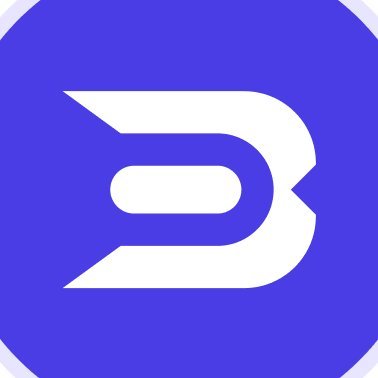On the 3rd, growth was about 40%, TVL surpassed 1.1 billion USD. How to participate in the Linea ecosystem incentive program?
Author: Grapefruit, ChainCatcher
Editor: Marco, ChainCatcher
Since the launch of the Linea Surge incentive program on May 17, the TVL of the Linea mainnet has entered a rapid growth phase, breaking through $1.1 billion from around $700 million within three days, an increase of over 40%.
According to data from L2beat, as of May 29, the on-chain TVL of Linea was $1.13 billion, ranking sixth in the entire Layer 2 market.
As a zkEVM Layer 2 scaling solution developed by Consensys, the parent company of MetaMask, every move of Linea has drawn attention from the crypto community.
Although it is a star project in the Layer 2 network, the on-chain development of Linea has been unstable and lackluster compared to zkEVM systems like StarkNet and zkySnc, with no blockbuster applications emerging and no well-known native projects. The TVL has long maintained around $100 million, and user interest has been quite average.
Recently, the incentive program has driven a surge in TVL data, prompting community users to re-evaluate this Layer 2 network.
Two Major Drivers Behind Linea's Data Growth: Lower Gas Fees and Suger Incentive Program
From the trend of data changes, the on-chain TVL of Linea began to rise in February this year, climbing from the long-stagnant $180 million to a new high, reaching $1.13 billion by May 28.

There are two important factors driving the growth of Linea's on-chain data: first, the reduction in Linea network gas fees; second, the Suger incentive program.
In terms of gas fee optimization, Linea has made two significant upgrades.
First, on February 16, Linea launched the Alpha v2 version, which optimized data compression and other functions, reducing the cost of submissions to the L1 mainnet by 90% compared to the original V1 version. This upgrade initiated the upward trend in Linea's on-chain TVL.
With the completion of the Ethereum Cancun upgrade in March, Linea also introduced the EIP-4844 proposal on March 26, adopting a new Blob data format to lower the DA costs for submissions to L1, further reducing network gas fees.
According to L2beat data, after adopting the Blob data format, the cost of submitting data to L1 dropped from about $200,000 per day to a few thousand dollars, even to single digits, with each on-chain gas fee falling below $0.02, less than 1/400 of the original.

On the second day after successfully adopting the Blob format (March 28), Linea announced the launch of the ecological incentive program Linea Voyage: The Surge, which was planned to go live in April, attracting users to provide liquidity for DeFi applications to increase network TVL and promote the prosperous development of the on-chain ecosystem. At that time, the on-chain TVL of Linea was $471 million.

According to official information, the main purpose of the Linea Surge incentive program is to increase on-chain liquidity (TVL) to activate ecosystem development, allowing users to earn points token LXP-L rewards by contributing liquidity to selected DApp applications.
LXP-L is a new points token derived from the original LXP points token system (which has been suspended since May 12), and it is also a non-transferable soul-bound token (SBT), mainly used to track liquidity contributions on Linea.
Goal of $3 Billion TVL
The Surge incentive program is divided into six phases (Volts), each lasting one month, and each phase will feature different themed DApps. The specific duration of the event will depend on whether "all six phases have ended" or "TVL has reached $3 billion," with either condition signaling the end of the event.
Additionally, the total issuance of LXP-L will decrease by 10% for each phase of the event. This means that the earlier users participate, the more points rewards they can earn.
On May 17, the first phase of the Linea Surge event officially launched, with participating DApps mainly including DEX, lending, and cross-chain bridge DeFi applications.
Although it was nearly a month delayed from the original plan, the Surge event still received enthusiastic support from users, with a large influx of funds and users into the Linea ecosystem, and the TVL entered a high-speed growth mode.
Within less than three days of the launch of the first phase of Surge, the on-chain TVL of Linea rose from the initial $780 million to $1.1 billion, attracting over $300 million in funds within three days.
As of May 28, the on-chain TVL of Linea had risen to $1.13 billion, ranking sixth in the entire Layer 2 market.

According to Dune data, as of May 23, the total asset scale bridged on the Linea mainnet had exceeded $812 million, setting a new historical high.
How Can Project Parties and Users Participate in the Linea Surge Incentive Program?
"Participate in the Surge event and earn LXP-L points" has become a new task for the Linea community. According to the OpenBlock data page, as of May 29, the daily number of participants on Linea exceeded 565,000, with a total of 7.96 billion LXP-L points already distributed, averaging over 14,000 points per user.

For DApp project parties, participating in the Surge program is a great opportunity for exposure and user growth, and they will also receive traffic and resource support from Linea's official team. According to official statements, the number of DApps currently deployed on Linea has exceeded 300.
DApps wishing to participate in the Surge event must not only pass Linea's relevant review but also meet at least one of the following two conditions:
Have been operating on other EVM chains for at least one year, with a TVL peak exceeding $50 million;
Provide an audit report related to the contract version deployed on Linea and have implemented at least one real-time vulnerability detection solution provided by Linea partners;
According to the Surge event page, a total of 21 DApps are participating in this phase of the event.
The products mainly include:
Cross-chain interoperability protocols Connext, Stargate, Celer Network;
DEX platforms PancakeSwap, Sushi, SyncSwap, Velocore, SpartaDEX, iZUMi Swap, NILE, Lyve Finance;
DeFi asset management platforms Teahouse Finance, Overnight;
Automated yield aggregators Lynex, Clip Finance;
Launchpad platform Secta;
Lending protocols Mendi Finance, Gravita Protocol, ZeroLend;
Decentralized derivatives protocol Deri Protocol;
Re-staking protocol Renzo;

The weight of points rewards will vary based on the different applications such as DEX, lending, and the types of assets, with higher weights for ETH and LRT assets on DEX, lending, and cross-chain platforms.

For users, to participate in the Surge event, they first need an invitation. Then, they simply need to cross-chain their assets to the Linea network and deploy them to the above protocols to earn LXP-L points based on the amount of funds.
Moreover, for early users who participated before the launch of the event, as long as their assets on the Linea mainnet exceed 0.1 ETH, they will receive an LXP-L points bonus.
Currently, users can earn LXP-L points mainly in two ways: first, ecosystem points—by cross-chaining assets or depositing into Linea, interacting with ecological DApps, and providing liquidity for them; second, referral points—by recommending and inviting users through the Linea Surge invitation code.
Users can check the participating DApps, asset liquidity, points issuance, and other data of the Linea Surge event through the OpenBlock Linea data page.
Linea's Market Share is Only 2.4%
Under the expectation of token airdrops, the Surge incentive program has attracted a large number of users and funds to the Linea network in a short time, resulting in a surge in TVL data. Many users speculate that the Surge incentive program may be the last incentive activity before Linea issues its token.
Comparing to the Linea Voyage (Great Navigation) ecological DApp incentive program launched in November last year, in terms of user influence and TVL data growth, the Surge points program is undoubtedly also a success.
In terms of ecological development, since the public opening of the mainnet in July last year, Linea has launched a series of initiatives, but the final results have not been satisfactory.
In August last year, Linea announced the launch of the Linea Ecosystem Investment Alliance (EIA) to support the construction of Linea ecological projects, which consists of more than 30 venture capital firms, including Amber Group, Animoca Brands, and IOSG Ventures.
In November last year, the Linea Voyage ecological LXP points incentive program was launched, but it did not bring significant changes to the ecosystem, with TVL data fluctuating around $180 million until February this year when it began to improve.
Although the Surge incentive program has brought growth to TVL in a short time, the participating users are mostly small fund users. According to Dune data, over 71% of addresses on the Linea mainnet have deposited less than 0.1 ETH.

Amid community resistance to PUA users, how long the TVL growth brought by the Suger incentive program will last remains uncertain.
According to L2Beat data, the TVL of the Layer 2 market has reached $45.69 billion, with Linea's market share only at 2.4%.
















